






























by Will Nicholls
This editorial is not a rant against the Cree Board of Health and Social Services. There are many great things they have achieved and are trying to implement for our benefit –everything from community clinics with many services we now take for granted to women’s shelters to Elder residences and more.
However, there can be times when the expected service is less than desired. I recently had a colonoscopy appointment, my third in the past couple years. I’ve had certain unwanted things removed from my colon, and this checkup was to ensure nothing was missed. However, hospital policy dictates that if there is no one to pick you up, the procedure must be done without sedation. Unfortunately, my usual driver was unavailable and everyone else was busy or away.
I asked Montreal’s Cree Patient Services for assistance but found there was nothing they could do to help me. CPS or Wiichihiituwin is only available to persons who are referred by their home community. Never mind that the first
colonoscopy appointment was made from my home community of Mistissini, there was no help available for the follow-ups.
I was told to contact Health Canada. I did and was told they couldn’t help as I was the responsibility of the Cree Health Board, a catch-22 that’s a kick in the derrière.
So, what happened in the end (so to speak)?
Well, I tried undergoing the procedure without pain relief, but had to stop the doctors halfway through. Believe me, this health board policy is a real pain in the ass, both figuratively and literally.
I later learned that I was lucky that I was mobile as other Cree in my predicament are not. All James Bay Cree beneficiaries outside their communities face the same lack of services that I did. This includes Elders, children and the disabled. I haven’t found many in the Cree Health Board who support this policy, which also extends to homeless Cree people, who are especially vulnerable. Something seems wrong. Didn’t the James Bay and Northern Quebec

Agreement include health sections because it was felt that we were inadequately served? Weren’t those benefits supposed to be for all JBNQA beneficiaries, not just those currently in their communities?
I’m reminded of George Orwell’s novel Animal Farm, which noted that all animals are equal but that some are more equal than others. This policy creates a class system that is alien to the original ways of life for the Cree people and the nation as a whole.
Is there anything we can do? One step I’d recommend is contacting your local elected health board representative to ask them to change this policy. Another is to contact the CHB office of service quality by calling toll free 1-866923-2624 to make a formal complaint.
In the meantime, the Indigenous Health Centre of Tiohtià:ke offers a possibility of assistance in Montreal. You can reach them at 514 482-8667. For more information, their website is at www.ihct.ca.





The Nation is published every two weeks by Beesum Communications EDITORIAL BOARD L.
OF FINANCES Linda Ludwick EDITORS Lyle Stewart, Martin Siberok MANAGING EDITOR Randy
CONTRIBUTING WRITERS X. Kataquapit, P. Quinn, P. Quinn, N. Fedosieieva, J. Janke, S. Orr DESIGN Emma Lindsay SALES AND ADVERTISING Donna
Valade THANKS TO: Air Creebec
CONTACT US: The Nation News, 918-4200 St. Laurent, Montreal, QC., H2W 2R2 EDITORIAL & ADS: Tel.: 514-272-3077, Fax: 514-278-9914


OFFICE: P.O.
151, Chisasibi, QC. J0M 1E0 www.nationnews.ca EDITORIAL: will@nationnews.ca news@nationnews.ca ADS: Danielle Valade: ads@nationnews.ca; Donna Malthouse: donna@beesum.com
SUBSCRIPTIONS: $60 plus taxes, US: $90, Abroad: $110, Payable to beesum communications, all
of: The James Bay Cree Communications Society, Circle Of Aboriginal Controlled Publishers,
Hebdos Sélect Du Québec. Funded [in part] by the Government of Canada. | www.nationnews.ca | facebook.com/NATIONnewsmagazine




by Natalia Fedosieieva
To equip Indigenous youth with essential leadership skills, the Next Generation Program was launched in early March by First Nations Executive Education in partnership with HEC Montréal.
Held at the Ilnu Museum in Mashteuiatsh March 4-6, this immersive leadership initiative is an intensive three-day program that provided 30 participants aged 18 to 35 with workshop themes on politics, public speaking and goal setting. It was developed through a year-long collaboration with the First Nations Quebec-Labrador Youth Network, Mikana, New Paths Foundation, Wapikoni and Puamun Meshkenu.
Jay Launière-Mathias, an Innu and Anishinaabe leader from Pekuakamiulnuatsh First Nation, spearheads innovative projects for Indigenous youth at Puamun Meshkenu, a non-profit organization aiming to develop the potential of Indigenous youth in Quebec.
“We try to make it as dynamic as possible by including presentations, examples, videos, music so that young people can really understand what we’re talking about,” Launière-Mathias said.
In his opinion, the program succeeded in bringing together individuals who have different path profiles and who might not have met otherwise. During the workshops, entrepreneurs from different industries and university students were engaged in the areas most relevant to them, said Launière-Mathias.
“Overall, people appreciated the three blocks of training that we offered them,” he continued. “But depending
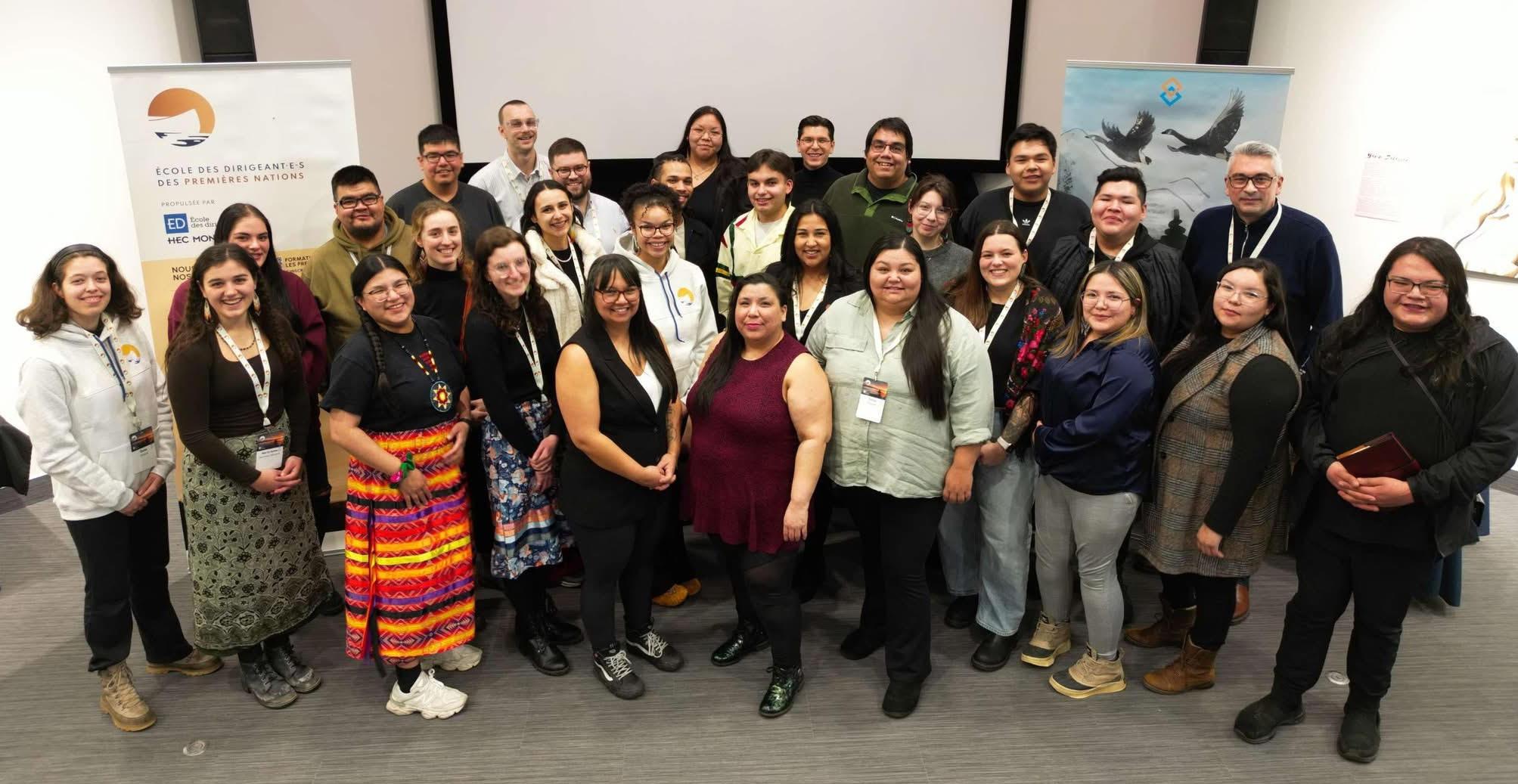
on each person’s interests, some young people were interested in politics, others found the session on public speaking particularly valuable.”
Beyond the training blocks, the program offered evening activities such as storytelling and artistic exchanges.
“The first day, we gathered for an evening of tales and legends with a storyteller from the Mashteuiatsh community,” Launière-Mathias said. The following day, a conference by Atikamekw visual artist Eruoma Awashish provided a unique cultural dimension, he added.
For Leonna Cheezo, an Anishinaabe youth participant, the session offered a fresh perspective on politics, broadening her understanding of its role in shaping Indigenous history and sparked an interest in governance and policymaking.
“When I registered in the program, I was more interested in public speaking and priority management,” Cheezo said. “But I really liked the politics part. When I used to think about politics, it
was not something I wanted to get into. It was a little bit taboo, especially in the community.”
A discussion explaining the impact of the Indian Act helped Cheezo understand how past wrongs affect the present and how to create positive change.
“It was more about like self-reflection,” she said. “After this day, we had a good look on why did it start and why it is that way today, and what can we do to make it better?”
Cheezo said she gained valuable insights into public speaking, time optimizing and political engagement, in order to shape her career and contribute to her community.
“We were given a lot of tools to put in practice,” she added. “The next generation should get involved in their community and not be scared of judgment or opinions, because we are the future of our community.”
Following overwhelming demand, organizers have announced a second cohort of the program in October.
by Patrick Quinn, Local Journalism Initiative Reporter
Quebec’s environment ministry has opened an investigation into allegations of unauthorized hunting of caribou in the Nichicun and Lac Catalogne areas of Eeyou Istchee by members of the Naskapi Nation of Kawawachikamach.
After the Cree Nation Government denounced the hunt, the province’s wildlife protection agency announced it is looking into the matter and that charges could be filed. Several sources confirmed to the Nation that Naskapi hunters killed up to 200 caribou in mid-February.
However, it’s unclear how many came from the endangered woodland Caniapiscau and Témiscamie herds as they’re known to mix with migratory caribou.
“At this time of year, it is likely that the animals are a mixture of the two ecotypes,” said Martin-Hugues St-Laurent, professor of animal ecology at the Université du Québec à Rimouski.
“Having tissues taken from the harvested animals would make it possible to determine the ecotype of each animal killed.”
Quebec’s caribou are divided into three ecotypes: migratory, mountain and woodland. The woodland caribou are particularly at risk. Populations in Val-d’Or and Charlevoix are so vulnerable that enclosures have been used to protect them. The George River herd has declined 99% since the 1990s, which prompted a ban on hunting these caribou in 2018.
The Cree Nation did not authorize any caribou hunting within its territory this year and has requested that all communities and hunters respect this edict. The Eeyou Istchee Land Keepers program is mandated to monitor ecological health and report suspicious activities.
The CNG recently received reports indicating that further caribou hunting is being planned in the same Nichicun
area by Innu hunters from Matimekosh Lac-John – a hunt that is not endorsed by other Innu nations. The CNG, along with the Cree Nations of Chisasibi and Mistissini, condemned these hunts.
“For many years, the Cree Nation has invested much effort to protect these vulnerable herds, and the sacrifices made by our communities are now at risk,” stated Mistissini Chief Michael Petawabano. “These hunts threaten the caribou’s survival and undermine the trust and cooperation that we have all worked to build. I call for an immediate end to these activities and urge all to respect the collective efforts being made to protect these caribou herds.”
The CNG urged all hunters and communities to respect conservation measures and immediately cease all hunting activities in the Nichicun and Lac Catalogne areas. It called on Quebec Wildlife Protection to intervene on unauthorized hunting, conduct aerial patrols to investigate and monitor


the situation, and coordinate with Cree wildlife protection assistants.
On February 28, the Naskapi Nation responded in a statement acknowledging that the hunt took place in the Cree Area of Primary Interest and that prior authorization from the Crees should have been sought, in accordance with treaty obligations and the existing nation-to-nation agreement.
Voluntarily ceasing to hunt the George River herd in 2018 due to its plummeting numbers, the Naskapi traditional community hunt then shifted to the Leaf River migratory herd, whose population has been higher but is generally further away from their community. In this case, the Naskapi hunters said that targeting the more vulnerable herd was unintentional.
“We were following the tracks north of the Caniapiscau River, near Eaton Canyon,” explained Naskapi hunter Christopher Mameanskum. “We thought it was the Leaf River herd, because last year that’s where they were.”
The Naskapi traditional territory, Nuchimiyuschiiy, overlaps with the territory of several other First Nations, highlighting the importance of joint stewardship, coordination and communication efforts. Through initiatives like the Ungava Peninsula Caribou
Aboriginal Round Table, they hope to develop sustainable conservation strategies.
A spokesperson told the Nation that “the Naskapi Nation deeply regrets the situation and takes it very seriously. They reaffirm their commitment to preserving both forest and migratory caribou populations and strengthening the collaborative efforts for their long-term protection.”
The Naskapi Nation said it will adopt a comprehensive law on enforceable procedures and protocols applicable to any future community hunt.
Section 24 of the James Bay and Northern Quebec Agreement stipulates the Naskapi have the right to hunt on Cree territory “without being subject to the control of the Cree tallymen,” but only if the person is “within this area for the purpose of harvesting caribou and only for purposes of food in case of need.”
The annual caribou hunt is an important part of cultural and environmental heritage for Cree, Naskapi, Innu and other communities. However, community hunts have grown more controversial as populations decline.
A harvest of hundreds of caribou by Naskapi hunters in Chisasibi territory in 2016 drew outrage. In 2021,
a cull of 300 caribou by Innu hunters near the Labrador border led Naskapi Kawawachikamach Chief Noah Swappie to ask, “When are we going to eat caribou?”
In 2022, the Cree and Innu nations reached a mutual understanding that allowed Innu hunters a winter caribou harvest limit of 300 in Eeyou Istchee. It also prohibited for-profit hunting, among other protocols. Due to the declining numbers of the Leaf River herd, this mutual understanding was not renewed this year.
Quebec’s environment ministry estimates an average 11% decrease in the population per year among woodland caribou. As some herds approached “the threshold of near disappearance” last year, federal Environment Minister Steven Guilbeault recommended an emergency decree to protect boreal caribou.
On March 10, Guilbeault announced a $100 million Canada-Quebec agreement to advance nature conservation in the province. Nearly a third of this funding is aimed at supporting Indigenous leadership in biodiversity conservation, which could include measures to aid the boreal caribou’s recovery.
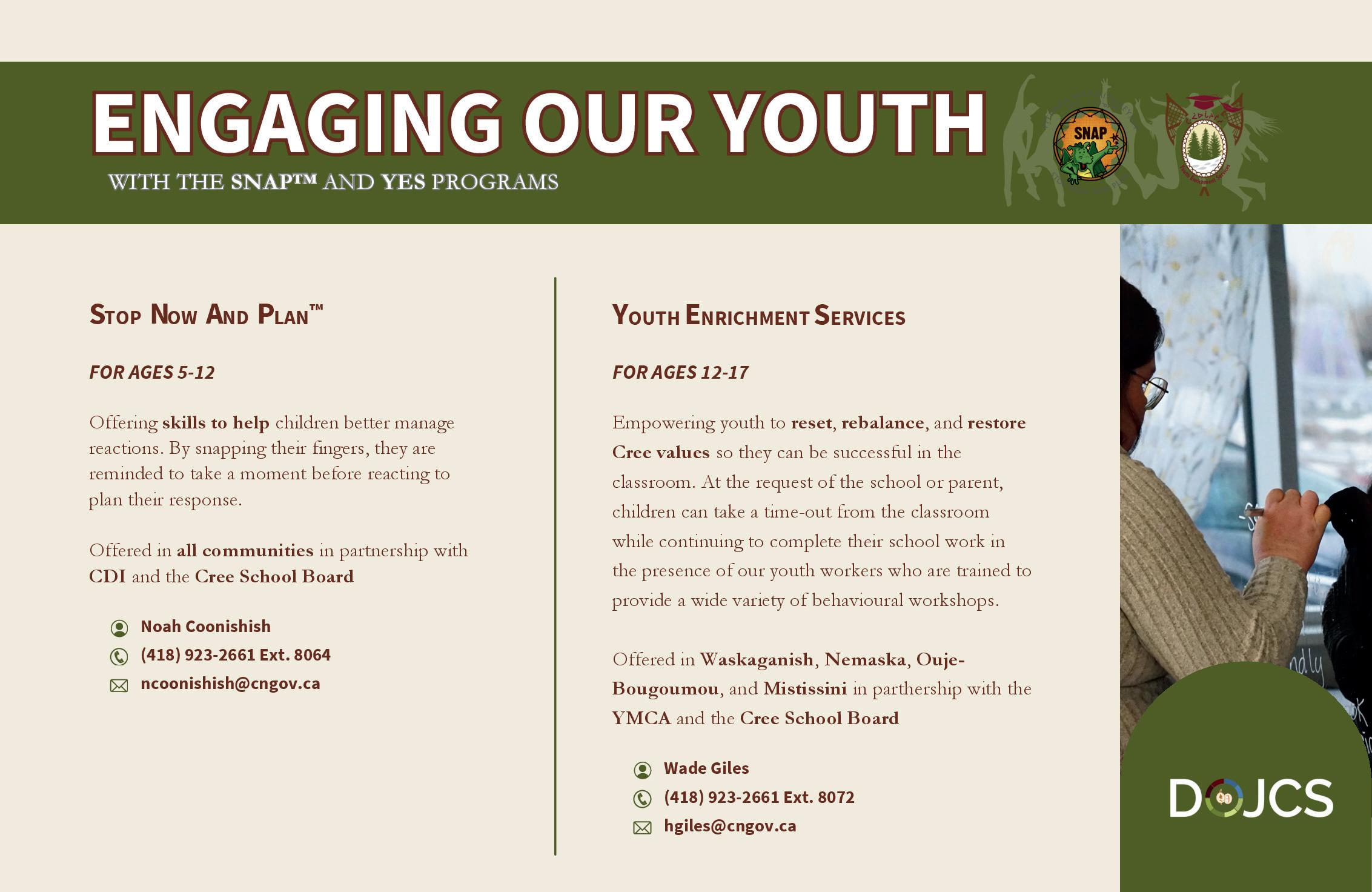

Air Creebec passengers panicked when an engine shut down during their flight from Chisasibi to Montreal on March 11. The company said the engine on Cree Health Board charter flight 238 was stopped as a preventative measure and the aircraft safely landed without further incident.
“We flew for like 40 minutes with the remaining engine,” shared passenger Mike Scott. “That was probably one of the scariest experiences to go through. The pilots and flight attendant were professional and calm the whole time. Super happy we landed safely though – please get your maintenance crews to inspect your planes.”
The CHB released a statement noting that the Dash-8 aircrafts used for their charter flights can fly on one engine without danger and that crew receive regular training to handle emergency situations. However, this situation was unprecedented in its 10 years of charter flights.
As per Transport Canada regulation and De Havilland requirements, all Air Creebec aircrafts are inspected daily. There are a few reports of previous engine shutdowns during Air Creebec flights, including one to Moosonee in 2022 and to Val-d’Or in 2012.
Passenger Suzanne Saganash was sitting near the engine as it slowed to a stop. She said she was crying as a flight attendant read emergency procedures and said next time she’ll take the bus.
On February 27, the Cree First Nation of Waswanipi announced the adoption of the Declaration of the Sole Shareholder of the Waswanipi Development Holding Corporation, which they stated marks “a significant move towards unity and transparency” between the band council and its subsidiaries.
The initiative is said to ensure accountability and environmental sustainability to support the community’s self-sufficiency and governance. A week later, the Waswanipi Development Corporation (WDC) released a statement defending itself from allegations there was conflict of interest in the construction of its new commercial building.
Community member Steve Matoush had alleged that the building originally intended to be a mini-mall had instead become commercial and office space for the band-owned Mishtuk Corporation. Matoush stated that the building’s contract had been given to family members of community leadership.
When Matoush was swiftly sent a cease-and-desist demand from the band’s legal counsel, he said he wants to see “a forensic audit” of operations. Matoush shared there’s been no response to a request for a general assembly with
Chief and Council to address unfulfilled promises, support for entrepreneurs and disparaging comments towards mine workers.
In its statement, WDC said that there had only been only one response to the community’s request for proposals, which was approved “following due review by qualified professionals.” WDC stated that no member of its board of directors is related to the local entrepreneur, Waswanipi Eenuch Construction.
WDC stated that “dishonest and baseless comments made out of personal frustration are detrimental to the harmonious functioning of our organization and to our community at large.”
On March 5, Grassy Narrows First Nation in northwestern Ontario held a groundbreaking ceremony for the community’s long-awaited Mercury Care Home. Anticipated to be ready in two to three years, the state-of-the-art facility will be shaped like a sturgeon.
First promised in 2017 and delayed for several years, the home will provide in-patient services for 22 people and outpatient services for all affected community members.
About 90% of the Ojibway community’s residents have been impacted by mercury poisoning dating back to the 1960s and 1970s, when the Dryden paper mill dumped about nine tonnes of the toxin into the EnglishWabigoon River System.
“It’s something that should have happened a long time ago, instead of us having to fight so hard to get to this point,” community member Robert Williamson told the CBC. “It affected the social well-being of everyone in the community and it led to a lot of drinking and a lot of suicides over the course of my lifetime.”
While the river’s contamination has meant the destruction of the First Nation’s fishing industry, fish remains a staple of the people’s diet. Fewer than 1,000 live in the community as many mercury sufferers have moved elsewhere for treatment.
With a study suggesting ongoing industrial pollution is worsening the river’s contamination, many want to see the Dryden paper mill shut down, the river cleaned up and community members compensated. Grassy Narrows has taken both the governments to court over the issue, appealed to a human rights commission and held numerous demonstrations.
The federal government is spending $82 million on the 6,500 square-foot home’s construction with $68.9 million funding for a community trust that supports ongoing operations.
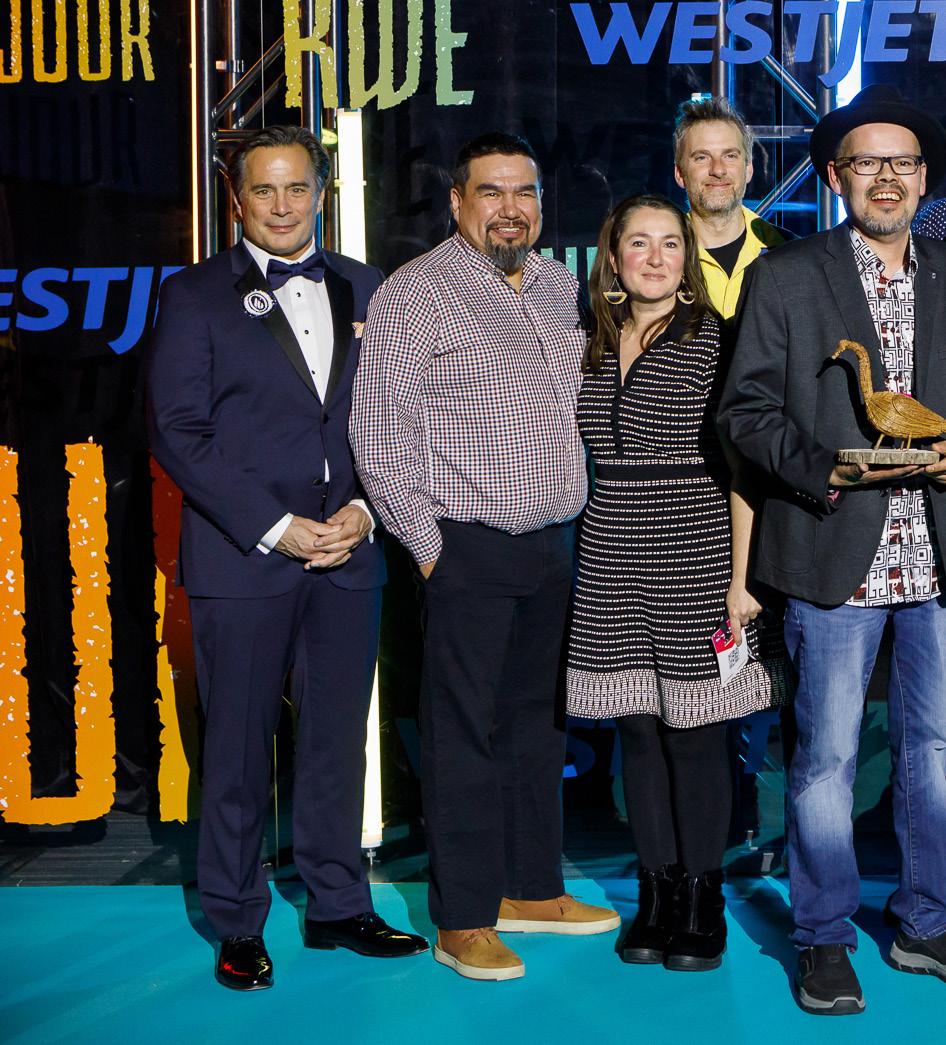
by Patrick Quinn, Local Journalism Initiative Reporter

Mistissini’s Nibiischii Corporation was a big winner at the annual Indigenous Tourism Awards February 27, earning the Quebec industry’s prize for Best Enterprise of the Year. Nibiischii was recognized as “a leader in ecotourism and sustainability” in managing the province’s largest wildlife reserve.
In accepting the award, Mistissini tourism coordinator Andrew Coon emphasized the community’s resilience. After finally getting “the keys to the office” in April 2017 – when the community took full control of the reserve – Coon said a record number of visitors came to the territory.

With this year’s International Indigenous Tourism Conference being held in Montreal, a large delegation of Nibiischii’s board members and growing team was able to attend the event’s diverse workshops and celebrate the achievement. The award has raised interest in Nibiischii from tour operators and aspiring Cree cultural ambassadors.
“We’ve already had people from Waswanipi, Wemindji, calling to say I can give workshops,” said Nibiischii executive director Mireille Gravel. “I’m extremely proud. For us it was more than just a trophy. It was recognition of our hard work and dedication as a team since 2017.”
While the reserve has long enjoyed a reputation as a fishing destination, it has been steadily adding attractions along Waconichi Lake’s shoreline that reinforce both Cree culture and its ecotourism mandate. Various environmental certifications recognize its meticulous attention to sustainable development.
Besides renovating existing rustic log cabins for comfort and energy efficiency, Nibiischii added solar-powered Mwakw floating cabins in 2022. Visitors can watch movies at a waterfront cinepark or gaze at the northern lights through the region’s largest telescope in its astronomical observatory – soon to be International Dark Sky certified.
This winter marked the first time it remained open year-round, hosting several Cree entities and local corporations and operating at near capacity. Snowshoes and hok skis are available for guests who may also participate in educational activities, workshops and games. Microbrewery beer and Niimaawin (“food for travel”) vacuum-packed meals inspired by Cree culinary culture are available for purchase.
“The reflection of the documentary on snow was an amazing experience, like northern lights,” Gravel said. “People can watch from inside igloolike domes we’ve installed that are heated with a comfortable fur carpet.
We have a big ice rink now, snow yoga, the polar dip with saunas on the lake.”
In a few weeks, 360-degree virtual tours demonstrating the Cree way of life will be ready to launch. The short clips will provide valuable cultural context to activities like the 4.5-km aerial trail, which will offer fantastic views from a suspended bridge and cliffhanging sections when it opens later this year.
Cultural development officer Mario Lord has introduced a whole other level of cultural authenticity since being hired full-time after last year’s Goose Break. Lord has led workshops ranging from demonstrations of traditional trapping and ice fishing to building shelters and finding medicinal plants.
“I’m trying to build a little Cree village and pass on our stories, where we came from and how we survived,” Lord told the Nation. “Right now, I only have a shaptuan installed, doing some traditional sewing, a bit of crafts, showing traditional tools and how to make moose hides. We’ve kept busy all winter.”
Nellie Wapachee Gray has led moccasin-making workshops with her mother, while the Mianscum family, whose trapline hosts the Waconichi site, occasionally greet visitors and light the teepee fire. In January, an assistant was hired for Lord, who he said has been learning quickly.
The tourism conference provided cross-cultural connections and ideas for expanding next summer’s workshops. Inspired by other First Nations making a spice from dried blueberries and pepper from boughs, the assistant hopes to one day live in an Inuit community to bolster his knowledge.
“There were a lot of travel agents interested in our traditional things,” said Lord. “I was very happy when we got the awards. I’ve worked all my life and never had that kind of recognition.”
During the conference, Cree artists Tim Whiskeychan and Emma-Jane Dixon Whiskeychan presented a guided painting session while Deborah Ratt taught beadwork. Artists from the Cree Native Arts and Crafts Association presented at the Artisan Marketplace as community representatives networked and shared knowledge.
As in past years, Nibiischii’s successful award entry was driven by the Cree Outfitting and Tourism Association. COTA is considering the development of new travel packages that could, for instance, combine a stay at Nibiischii with Ouje-Bougoumou’s Cree Cultural Institute and Waswanipi’s cultural festivals.
“It’s trying to find the hidden specialty of each destination,” explained COTA executive director Robin McGinley. “James Bay, with the potential of the national marine conservation area, is going to be a whole other beautiful gem. They can highlight polar bears and belugas that Nibiischii doesn’t have.”
Waskaganish’s Wiinipaakw Tours is swiftly positioning itself as a tourism force after operating at full capacity last summer. With popular chartered cruises out on the bay helmed by Cree captains, they’re considering adding a second boat and multi-day excursions.

Noting that Eeyou Istchee is the size of France, McGinley suggested that each Cree community leverage Nibiischii’s success to become a unique destination. Five communities are exploring the creation of campgrounds, which could include Creetopia “glamping” tents.
Environmental sustainability is a cornerstone of Cree tourism, highlighted by Nibiischii’s designation in November as the province’s first national park operated by a First Nations community. The culmination of over two decades of negotiations, the legal protection status will help conserve old-growth forests and at-risk species while promoting access to Lake Mistassini.
As organizations like Nibiischii Corporation aren’t allowed to manage protected areas, the Albanel Lake and Penicouane Bay camping sites will be transferred to the national park’s operations while the Waconichi site will remain. Although all three sites are almost fully booked for the summer, lodging will stay limited to maintain healthy fish populations.
“We have such a long list of activities we want to develop,” shared Gravel. “We’ve had tour operators and journalists from around the world and got a really positive response. Hopefully we’ll be hosting international clientele next year.”
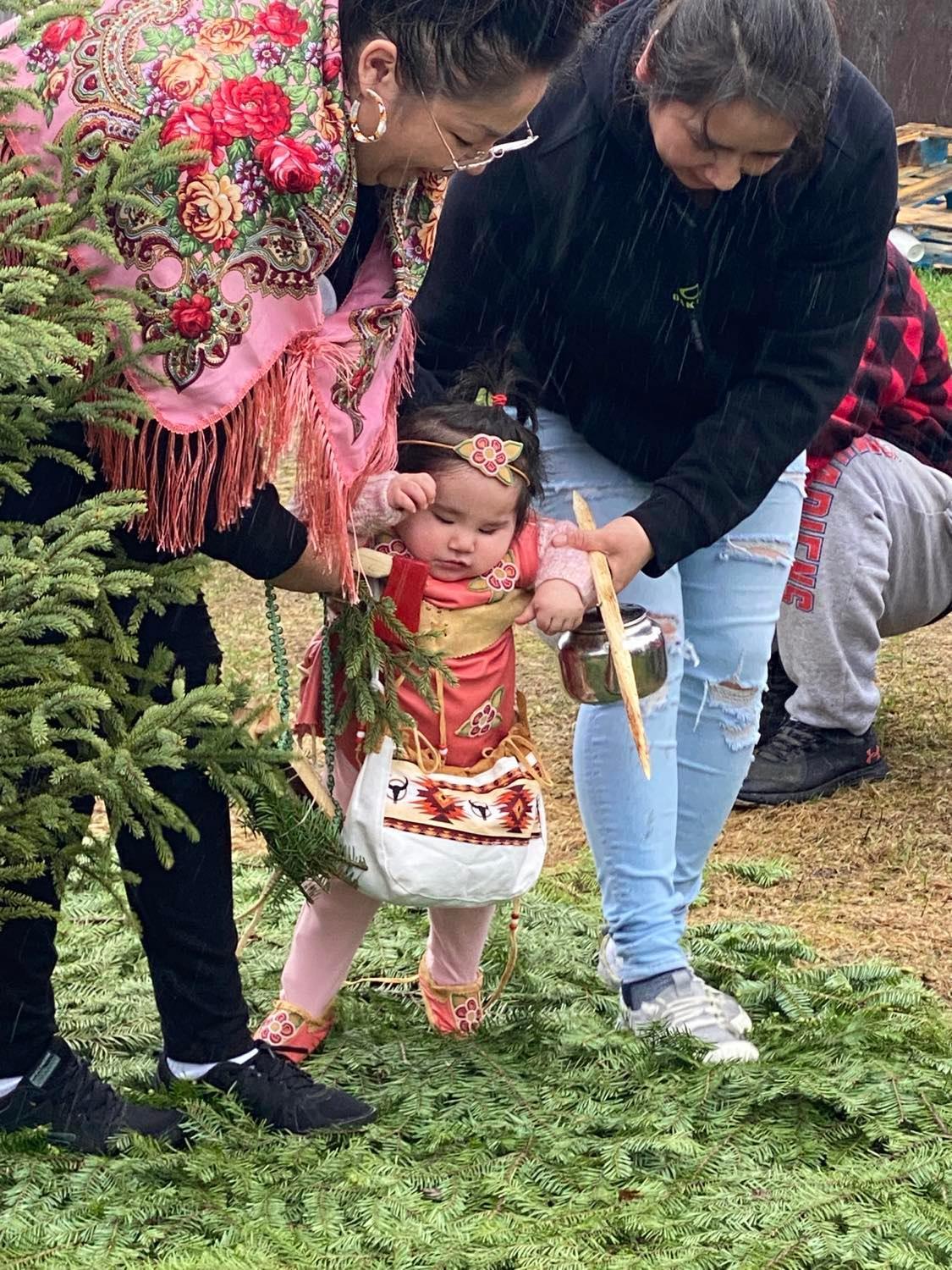









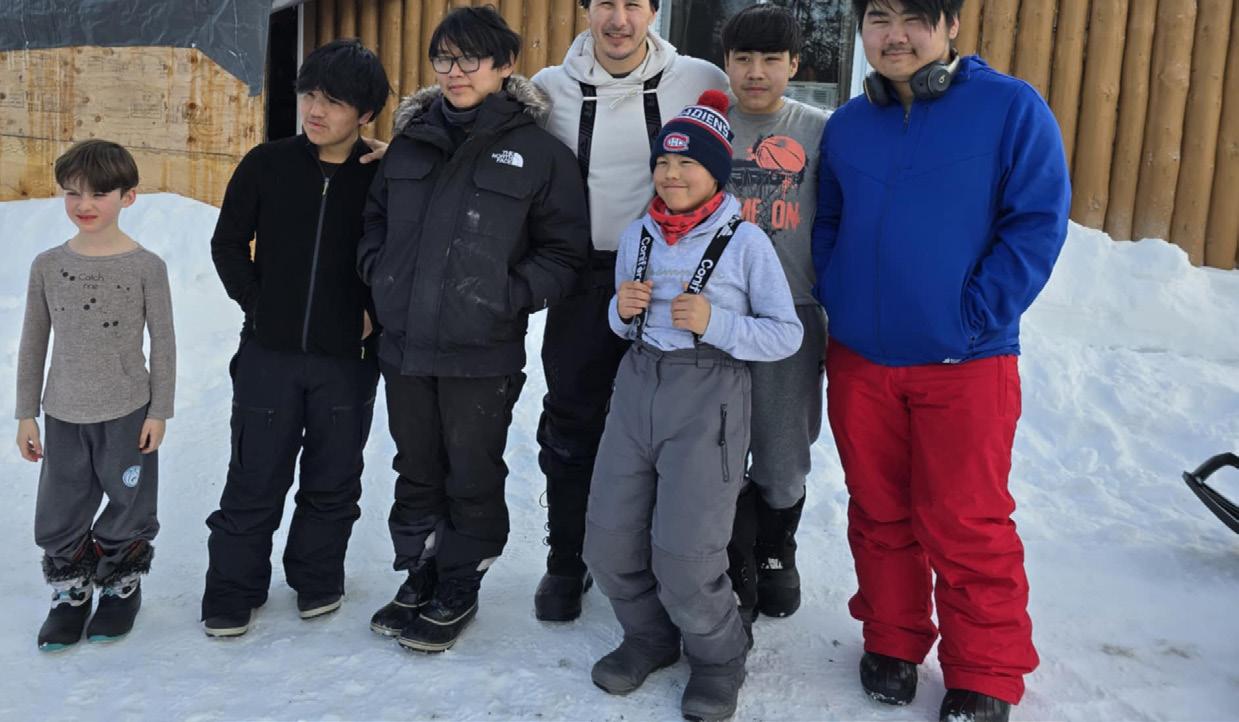


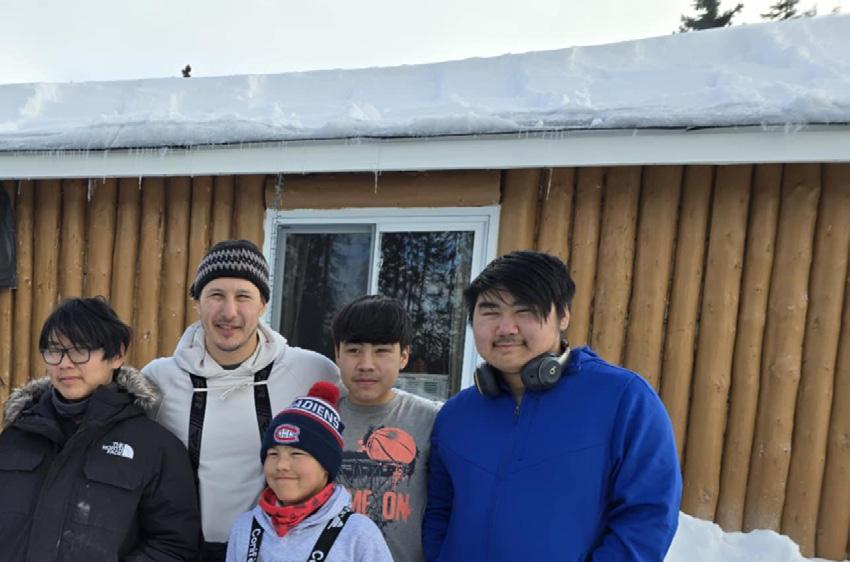






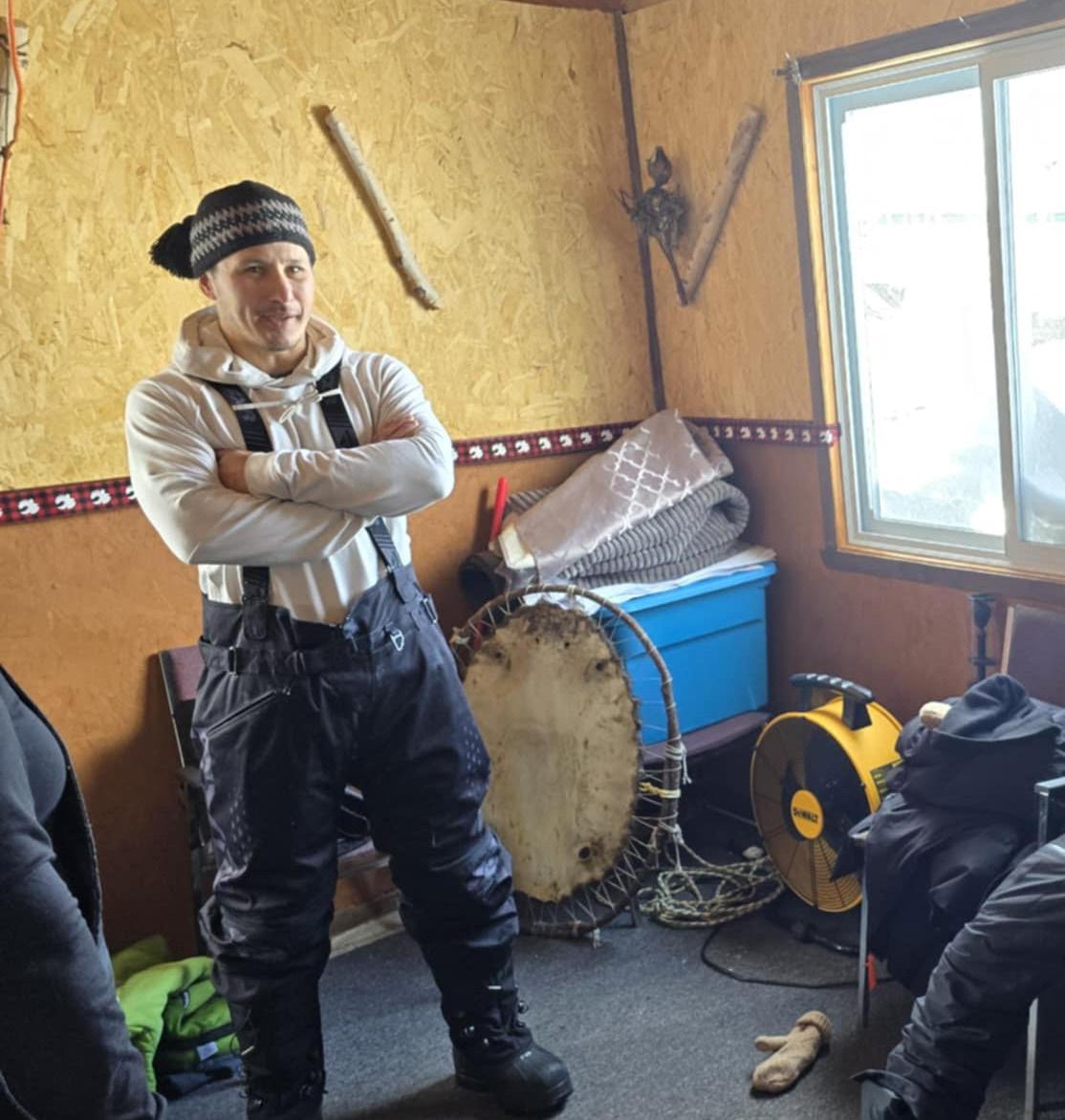



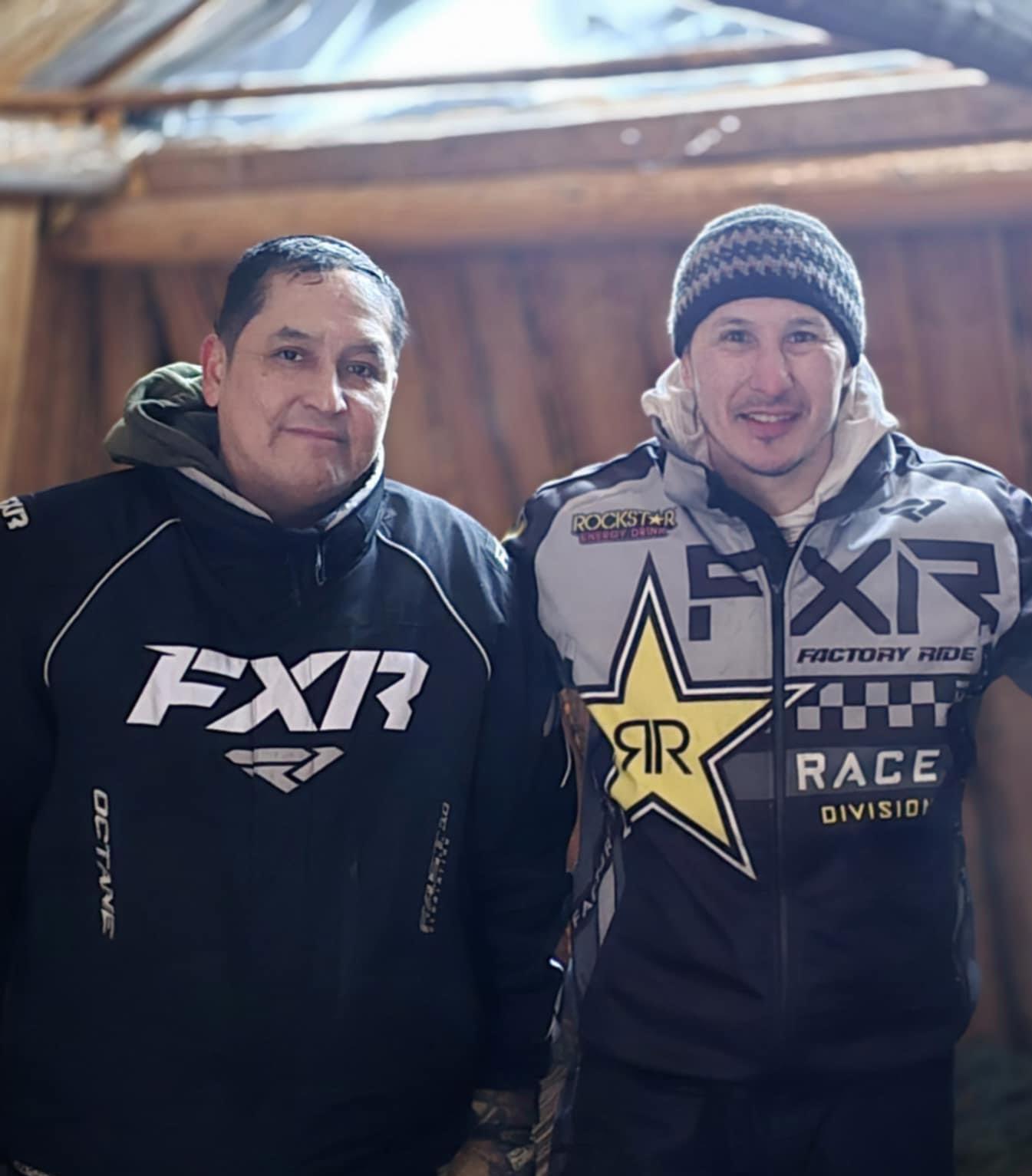

by Joshua Janke
In 2001, Jordin Kudluk Tootoo made history when he was chosen 98th overall by the Nashville Predators, becoming the first Inuk hockey player to be drafted into the NHL. Sporting the number 22 in reference to his last name, he became known as the “Tootoo Train,” a relentless force on the ice, loved by fans for his never-back-down attitude.
Originally from Rankin Inlet, Nunavut, Tootoo played for the Predators, Detroit Red Wings, New Jersey Devils and Chicago Blackhawks, amassing 161 points and 1010 career penalty minutes over the course of 721 NHL games. His middle name, Kudluk (“thunder” in Inuktitut), foreshadowed his impact, not only in hockey but in life after the game.

Since retiring in 2018, Tootoo has turned his attention to advocacy, founding the Tootoo Foundation in memory of his late brother Terrence. The foundation supports suicide prevention and at-risk youth, with its mission of inspiring Indigenous youth to rise above adversity.
On March 3, Tootoo arrived in OujeBougoumou to a heartfelt reception at the Capississit Lodge, where he was greeted by staff and community members eager to meet the hockey legend. Tootoo was not one to simply sit back and relax after checking in.
“He wanted to hang out with the community and do stuff,” said Ouje Tourism Officer Ron Simard, who helped coordinate Tootoo’s visit. “He wanted to go out for a ride, and we all wanted to be good hosts. Harry Bosum was the one who invited him to go to David and Anna’s camp.”
So Tootoo took a 45-minute snowmobile ride to a cultural base camp operated by David and Anna Bosum. The camp is part of Nuuhchimi Wiinuu Cree Culture Tours, an initiative run by the couple to share Cree traditions and knowledge with visitors.
The Bosums welcomed Tootoo into the camp and shared stories. “He enjoyed just sitting down and talking about life on the land. As an Inuk, he recognized the similarities between our cultures and connected with the experience,” Simard explained.
David Mianscum, the tallyman for the territory, was also present and offered to take Tootoo deeper into the land.
“We went out to explore and show Tootoo the mountain, and he loved it, although the fresh snow was giving him a hard time,” Simard recounted with a
laugh. “He got stuck five times! It was like four feet of powder snow, and if you lost your balance, you were just going to sink.”
A moving moment at the camp was when Tootoo encountered a group of Inuit youth from Montreal who had been adopted from their northern communities.
“They had no idea Tootoo would be there,” said Simard. “He took the time to speak with them, telling them to never give up. It was a special moment – completely unplanned but meaningful.”
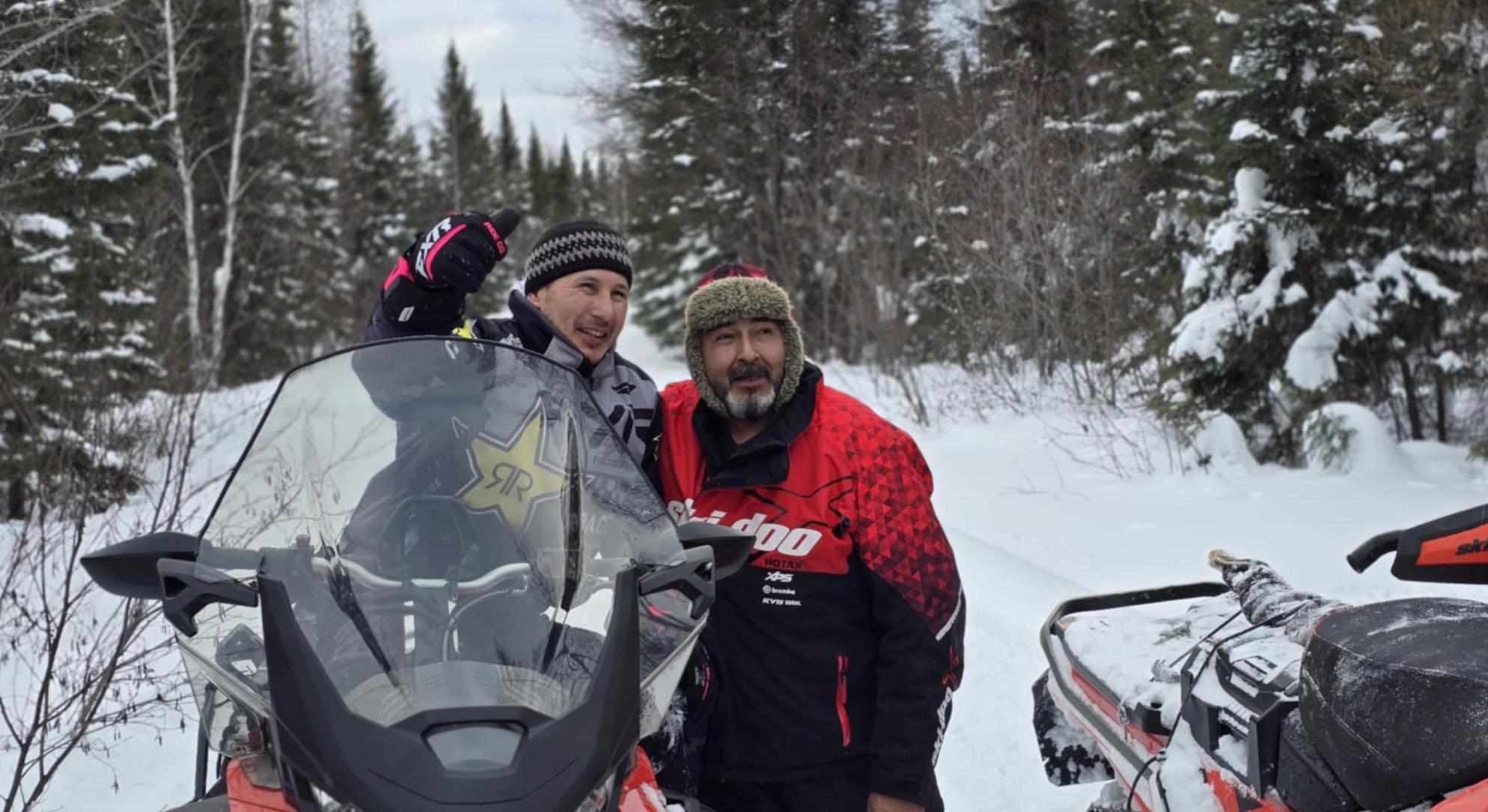
Simard noted that Tootoo’s life could have taken a different path, but he fought through. “That’s what makes his story powerful,” said Simard. He’s trying to help people step outside of their comfort zones and take chances in life. Aim high –that’s what he tells the kids.”
AndreeAnn Bosum, David and Anna’s granddaughter, reflected on the visit. “Seeing my grandparents’ smile, I wish I had been there to witness this moment,” she said. “I read Tootoo’s book as a teenager, and it’s a good story. I’m sure he felt a connection meeting them.”
On March 4, Tootoo sat down with Lance Cooper, Ouje’s Communications and Public Relations Officer, at the youth centre for an open and heartfelt conversation with the community’s youth.
“The premise of his visit was to speak about his career, the discipline it took to succeed, believing in oneself, and stepping beyond the boundaries of the community,” Cooper explained. “Many people don’t want to leave home, but he did. He experienced the culture shock, adapted and persevered.”
Tootoo spoke candidly about his personal battles.
“He talked about intergenerational trauma and how he had to navigate through it,” Cooper shared. “He said he just wanted to be loved, but he didn’t always get that growing up. He realized that he needed to love himself. He said, ‘I gave myself a gift and I went to rehab.’ It was during that time of healing that he realized, ‘I am a mentor. I can do something to help people.’”
A stirring moment of the discussion was Tootoo’s call to fathers. “You want to see a difference in your children? Fathers need to step up,” Tootoo urged.
“He wasn’t telling people how to parent – just sharing what worked for him,” said Cooper. “He spoke about the importance of culture, being with Elders, and learning life skills on the land.”
Cooper emphasized that Tootoo spoke directly to men, telling them to “let go of their egos, take the lead in their families, and be present. He reminded everyone to be the best version of themselves and not to compare their journey to others.”
As a sign of appreciation, the community presented Tootoo with a walking stick handcrafted by Geronimo Shecapio. “Geronimo had been working on this walking stick and knew who it belonged to after listening to his story,” said partner Paula Menarick. “It has owl feathers and traditional tanned caribou hide. We are so thankful we got to spend some time with him. Nakurmik Jordin!”
The event wasn’t without moments of levity. As a lighthearted gesture, Tootoo “signed” a contract with the Ouje Otters, a local hockey team known for its humour and camaraderie.
“The Ouje Otters started as a group of guys who weren’t picked for a team, so they made their own,” Cooper explained. “The Otters never practice, but they bring people together through fun.”
Tootoo played along, donning an Otters jersey for photos. “When I drove him to the airport, he asked how the Otters thing was playing out. I told him, ‘The guys are having fun with that.’ He really made their day,” Cooper laughed.

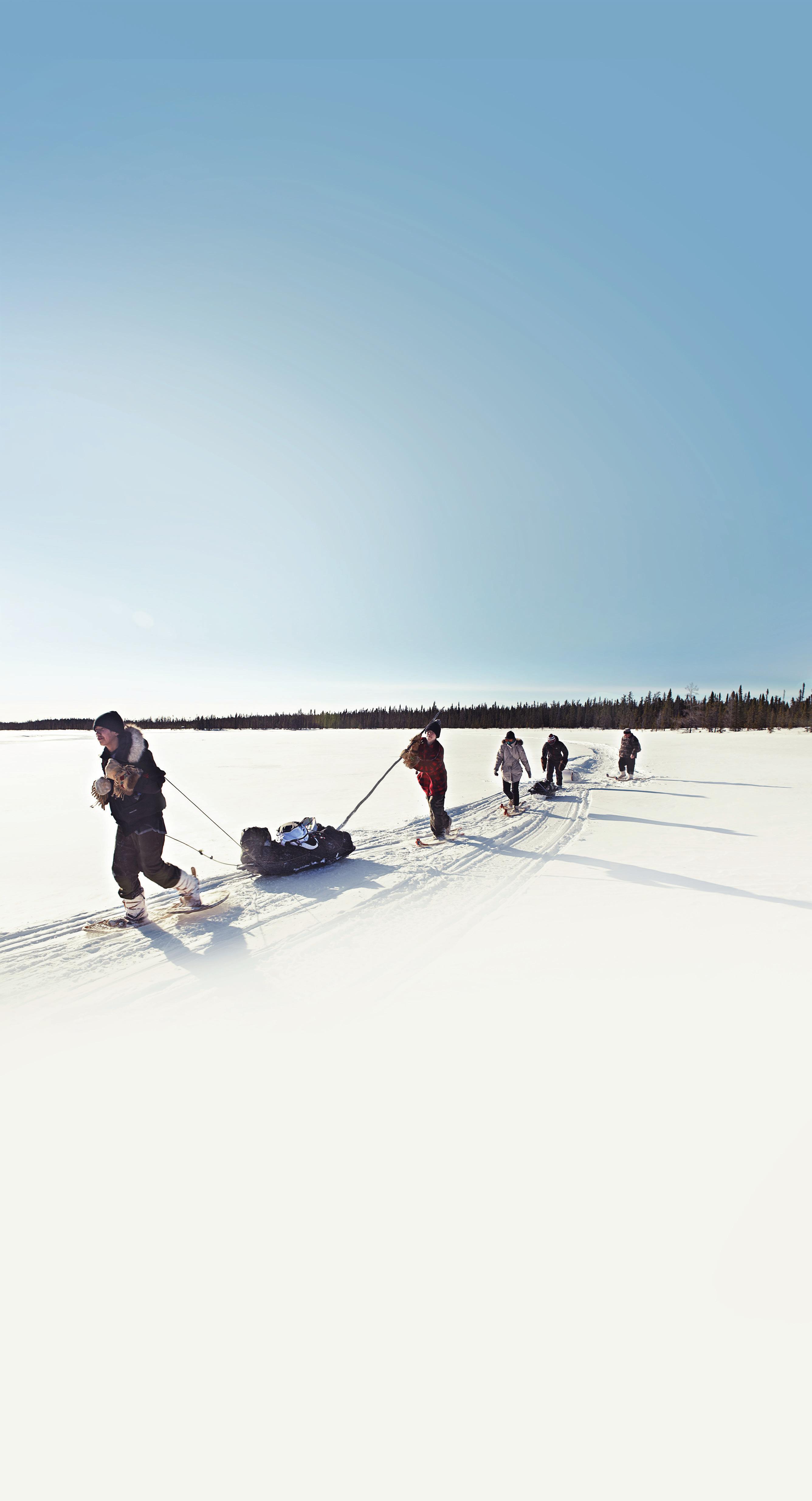



Chisasibi: Eastmain: Mistissini: Nemaska: Ouje-bougoumou: Waskaganish: Waswanipi: Wemindji: Whapmagoostui: WE CAN HELP YOU!
If you are a Cree beneficiary, the Cree Nation Government (CNG) can help you to fill out the record suspension application and if you qualify for financial assistance, the CNG may pay the costs associated with the application.
CONTACT YOUR LOCAL REINTEGRATION OFFICER ON HOW TO APPLY:
819-855-2120
819-977-2400 418-923-2661
819-673-2400 418-745-2260
819-895-2126
819-753-2770
819-978-3300
819-929-3796
If you have any additional questions, please contact the Correctional Services Regional Office in Val d’or 819-874-2600 or contact your local Reintegration


Nemaska youth winter journey joins Trappers’ Festival feast
by
Patrick Quinn, Local Journalism Initiative Reporter
After a week brimming with Cree culture, the Nemaska Trappers’ Festival welcomed youth returning from the annual healing winter journey to join in the final day’s grand feast on February 22.
While the community has organized winter journeys trekking by snowshoe to Old Nemaska since 2006, the last few years have been excursions based at one bush camp. With no guides confirmed as this year’s journey approached, it was decided to instead have the youth spend about 10 days on Charles Cheezo’s trapline at km48 on the Route du Nord.
Beginning with six females and six males, the two older participants who were leading the cooking and hunting activities were made assistant guides. Diane Tanoush and Liana Diamond served as project coordinators, David and Monica Tanoush were camp leaders, and Clifford Jolly guided the group to the pickup point.
“Rather than cancel the winter journey, I changed it to more of an excursion; hunting, trapping, fishing, sleeping in one big canvas tent,” said youth development coordinator Jean Meskino. “They’re all looking forward to next year so I’m assuming they had a good experience. They already want to do a canoe brigade.”
A two-week sewing workshop led by Evadney Mettaweskum and Rosie Tanoush from the local women’s association prepared the youth, aged 13-18. While some had never used a sewing machine, most finished their canvas coats, including one young man who finished in only about eight hours over

two days. Ribbon skirts, blanket bags and lunch bags were also created.
Meskino suggested future expedition preparations could include additional safety and first-aid training following an accident that occurred at the bush camp. When the youth were chopping wood to shape kindling one day, one participant caught his thumb and split his thumbnail sideways.
Fortunately, four participants employed their first-aid training to stop the bleeding and an ambulance was called. Although this youth wasn’t able to complete the journey, the others returned empowered and in high spirits. For next year’s 20th edition, Meskino hopes to offer both a bush camp week and a trek to Old Nemaska.
“We’re trying to get them more involved in cultural activities out on the land,” Meskino explained. “That’s
where my best memories were growing up. I was with my grandparents in the bush, initially to learn Cree. It was very calming in the bush – I’d go wander off alone somewhere.”
In most years, youth would trek 15-to-20 km each day to Old Nemaska once the trail was broken, depending on weather conditions. Staying at the bush camp had the advantage of improving the group’s Cree language skills as the couple they stayed with don’t speak much English.
While the youth originally planned to return the following day, Nemaska Trappers’ Festival coordinator Deborah Wapachee arranged with Meskino for their arrival to coincide with the festival’s closing feast. The celebration also honoured the children’s first snowshoe walk, which had occurred that morning.
“It’s one of the popular events in the community that people look forward to,” said Wapachee. “We got the youth involved and kids from the school even participate. It’s a nice event to connect with your Elders, who tell stories about what they used to do way back.”
The festival has grown over the years from a shaptuan gathering of Elders to a broad event at the sports complex drawing a wide range of visitors. With Chief Clarence Jolly suggesting one week was too short, Wapachee has high hopes that next year’s will be two weeks to allow more people to participate and complete more intensive crafts like snowshoe weaving and moccasin-making.
“Participation has been growing,” Wapachee confirmed. “I’m hoping to see our neighbours from the hydro camp or the lithium mine. My highlight is seeing the Elders connect with the community. As my grandfather would say, if at least one person takes something they learned and passes it along to their children that’s a big thing.”
Among the many workshops, Elder Annie Jolly demonstrated how to make fish nets, Linda Moar showed how to crochet while Jim Blackned shared his expertise with fishhooks, night lines and
toboggans. Former Cree culture teacher Charles Cheezo showed how traditional tools could be used to trap beaver, bear and lynx.
Bessie Blackned’s Cree language workshop had visitors match items on her table with the correct Cree word. Walter Jolly’s “mini museum” included a collection of traditional tools for hunting and trapping with a little story for each one. Helen Tanoush made slippers and Rosie Tanoush canvas coats.
Workshop facilitator Evadney Mettaweskum would like to see young people take over more workshops, suggesting “Elders are very much eager to pass on their knowledge, but it seems after the youth finish carving, they won’t continue making them.”
Mettaweskum said the moose-hide slipper and canvas parka workshops were the most popular. In connection with the local daycare, she showed how to make swings for dolls, for which she designed swaddling clothes. This seemed a natural extension after years of making baby clothing, learned from Elders during employment at the multi-service day centre.
“They shared about traditional medicine we used for diaper rash, decorating the umbilical cord, rabbit skin to
warm the child’s feet,” Mettaweskum explained. “They used moss instead of diapers. Even in the wintertime, they would dry it at their camps over the stove and clean it.”
Mettaweskum created her first canvas coat for her son when he walked from Mistissini to Montreal as part of a Cree protest against uranium mining in the territory. She has continued making coats for healing journeys and was busy with a contract making 30 for the local school.
As more Cree entities prioritize transferring cultural knowledge, there are growing opportunities for collaboration between departments and empowering community members. With the growing popularity of the Trappers’ Festival, some would like to see it extended to a month.
“I’ve seen the growth of people wanting to participate since 2010,” said Wapachee. “One week is not enough. Sometimes Elders are at home and people hardly visit them. Looking around the gymnasium, I could see their joy, smiling as people came to them and talking away.”












March 21, 2025 www.nationnews.ca Gareau Auto Celebrates Cree Language Month with Exclusive Offers! In honor of Cree Language Month, Gareau Auto is proud to present a special promotion designed just for you!
Don’t miss this incredible opportunity to celebrate while saving big. Visit us at Gareau Auto today and let’s get you behind the wheel of your dream vehicle!
Join us for a celebration of iiyiyiu knowledge, skills, and identity!
This momentous event allows us to demonstrate our iiyiyiu and iinuu knowledge, skills, and identity through a variety of events, games, and competitions.
Each school and adult centre will be sending delegations made up of students and employees to represent them, accompanied by Elders and Knowledge Keepers.
The events, games, and competitions will focus on:
iiyiyiu/iinuu ayimuwin, language
iiyiyiu/iinuu iiyihtuuwin, traditions and practices
March 25-27, 2025
Mistissini, iinuu aschii

What is happening?
Ottawa – February 27, 2025 – The Impact Assessment Agency of Canda (IAAC), in partnership with the Mohawk Council of Kahnawà:ke (MCK) and other interested First Nations, is conducting the Regional Assessment of the St. Lawrence River Area (SLRA) Regional assessments aim to better understand the potential effects of past, present and future development. They can be used to inform, among other things, future project-specific federal impact assessments and decisions in this area
As part of this work, IAAC, MCK and other interested First Nations have formed a Working Group and co-developed draft Terms of Reference that describes how this regional assessment will be conducted The draft Terms of Reference sets out the goal, objectives and planned outcomes of the regional assessment.
Indigenous communities and organizations, non-governmental and governmental organizations, the public and stakeholders are invited to review and provide feedback on the draft Terms of Reference
How can I participate?
Comments can be submitted online by visiting the SLRA’s home page on the Canadian Impact Assessment Registry (reference number 80913) Comments received will be published online as part of the regional assessment file and considered by the working group
Submit your comments online in either English or French by 11:59 p.m. on March 29, 2025. Participants who wish to provide their input in a different format or in an Indigenous language can contact IAAC by writing to stlawrence-saintlaurent@iaac-aeic.gc.ca
Virtual Information Session
The Working Group invites all participants to attend an English or French virtual information session via Zoom to learn more about the regional assessment, the assessment process, and how to submit comments on the draft Terms of Reference
• March 17, 2025, from 6:30 p m. to 8:00 p m. ET
• March 19, 2025, from 1:30 p m. to 3:00 p m. ET
For information on how to attend the virtual information session, please visit the SLRA’s home page and click on “Information Sessions ” If you have any questions, please contact IAAC via email at: stlawrence-saintlaurent@iaac-aeic.gc.ca
Will there be more opportunities to participate?
Following the public comment period, all feedback received will be considered by the Working Group in finalizing the Terms of Reference for the regional assessment.
Additional opportunities to participate will be announced in the future
Stay updated on the SLRA by following IAAC on X: @IAAC_AEIC #StLawrenceRiver or sign-up for notifications on the Canadian Impact Assessment Registry
For media inquiries, contact IAAC’s media relations team by writing to media@iaac-aeic gc ca, or by calling 343-549-3870

by Sonny Orr
The pavement crackles under my wheels. The salt, crushed into a soft talc, clings to my vehicle like sticky sand on wet feet. The clouds dissipate into a wonderous blue sky, the road ahead looks clear and unchallenging. It’s a rare day when the highway is clear enough to drive at the speed limit, without a blizzard causing havoc with travel plans.
As the kilometres pass by, the temperature slowly rises with every degree in latitude on my southbound trip. I wonder if this will be the trip of no hassles and no delays.
We notice that the further south we go, the more snow is on the ground, and I wonder if this is really winter in the south and that spring is just around the corner. A 1000 kilometres into my long drive south, the skies turn dark. I’m hoping that the investment in my high-performance winter tires will pay off, but I end up a little disappointed when raindrops appear, and the ice and snow disappear by the minute. Eventually, we hit Habsville, and it’s clear that winter is slowly being ushered out with the rain and plus 10 temperatures.
At the entrance of the classy hotel, I step out and stretch my short legs and turn around to see my once glistening clean car is now covered in road salt and dirt. At least I can brag about how dirty it is and the time it took to get it that way.
After a few resounding whistles of appreciation from the doorman, who trades his white gloves for working mitts just to open my doors, we check in and find out that the hotel is a hotbed of Eeyou activity.
Finally, the room invites our tired bodies to relax in clean sheets and we settle in. We wonder if we should order in and find out that the time to get nourished with the usual chicken and rib combos is too long and costly. So, I head to the nearest sushi shop and order a smorgasbord of exotic foods, which I discover are very affordable.
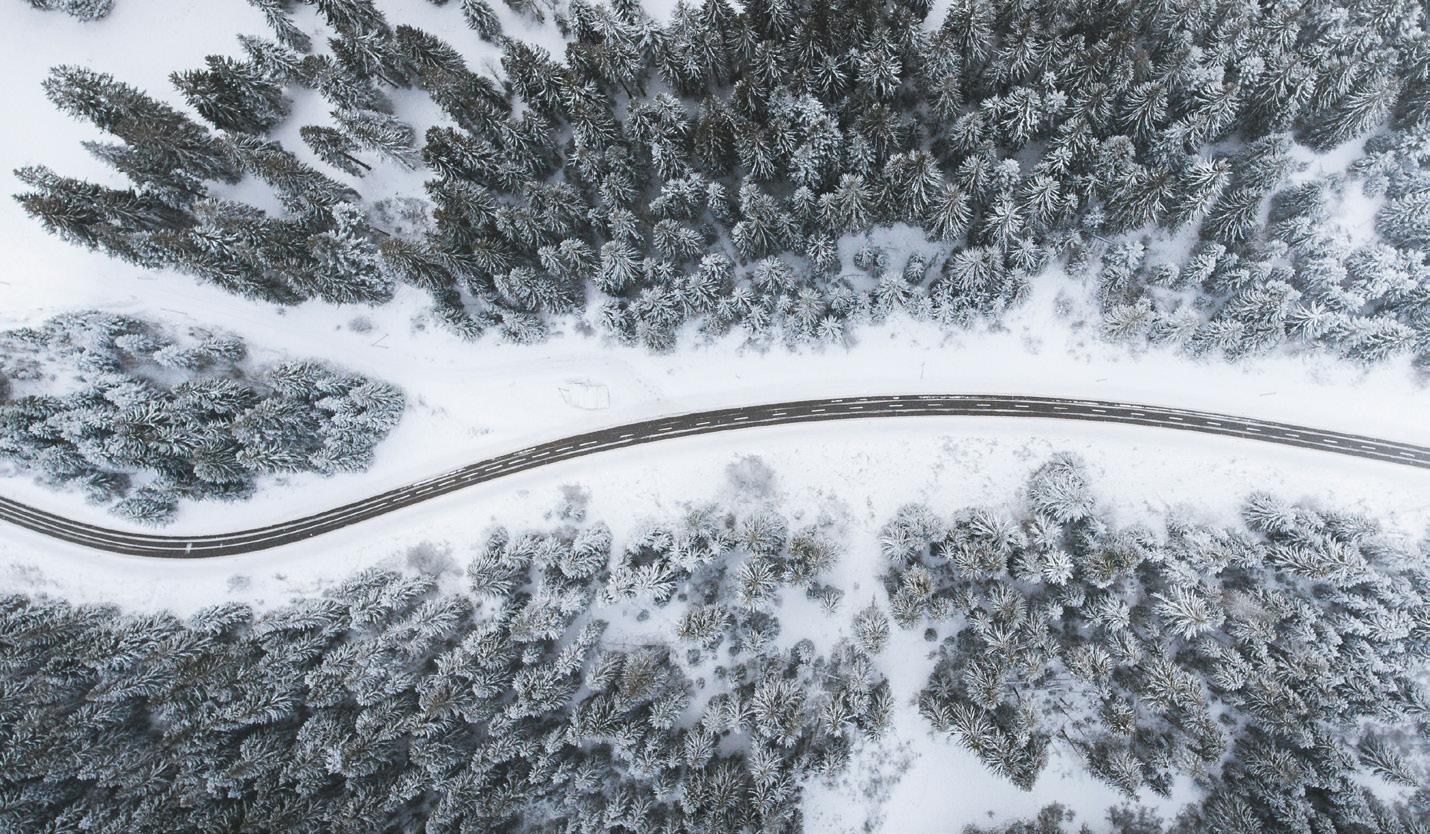
Hmm, my economic mind, finely honed after 30 years of finance, perks up when I hear that there is a large discount if I use cash instead of electronic funds. Huh? Cash? I check my skinny wallet to search for any colourful paper with a face on it, but find only my plastic cards, so I have to pay the full price of $25 and some change.
I’m still satisfied with my purchase, as I could get some processed cheese slices and week-old bread with the usual meat in the can (comprised of who know what parts of the cow that was picked off the floor in the meat-processing plant) for about the same price back home.
Naw, I’ll go with the sushi, made from fine tasty ingredients and easy to swallow, without guzzling a gallon of tea to wash it down.
The need for food abated, we plan the days ahead. My family members talk all night about which stores they will visit while I attend some university courses at an internationally recognized education institution, to further finetune my analytical mind. Ahh, the mind loves this new injection of learning how the financial world works today.
Back in the day, cheques reigned supreme and credit card debt didn’t show up until 30 days later, unquestioned by
the clerks who ground out a paper copy with a loud mechanical swipe of the card. Hopefully, the card won’t come back with insufficient credit notes to the vendor, who will berate you and warn the other vendors in the territory to stay clear of your scam.
Today, it takes seconds to get rejected and that cold but apologetic statement that you’ve been declined and seconds to get that nice smile from the hotel receptionist when it is cleared.
Yes, I learned a lot at that esteemed university. One was to respect your own financial situation and keep that credit rating high, high enough to satisfy the car dealer who has been hounding you to buy their latest pile of steel on wheels, even though they can see that you don’t need another vehicle as yours is only a few years old and in excellent condition. I graciously decline their offer, as I can say that new wheels can wait for another half decade.
I know I drive a family van that isn’t cool. But I also know that no one wants to steal it in order to avoid the embarrassment of having to return it and apologize that they really wanted that expensive Porsche parked next to mine. Blandness is my superpower.
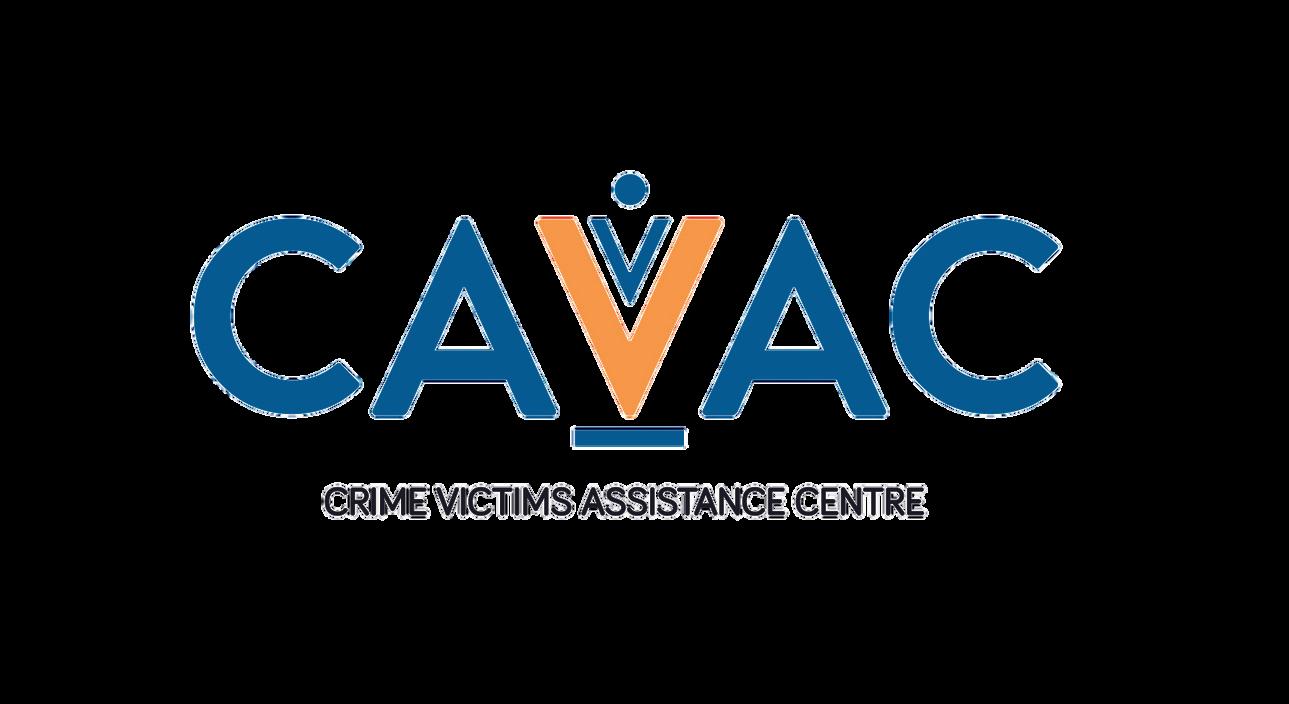








by Sonny Orr
Lately, I’ve noticed that there’s been a surge in the number of men taking bubble baths after a long hard day at work, or outdoors. I wonder if that’s because we don’t have to squander our water as much as others do? Or is it the feeling you get when you relax in a bathtub filled with clean water, topped off with a creamy scented foam (plus a dash of pine sol) and scalding hot ready to melt away anything toxic on your body? These days, you can’t be sure of what material you soaked yourself in after coming out of the bath. So, a full body dryer is recommended as the better solution for being clean and toxic-free.
Not that I really care about taking baths. But it seems that once a decade a bath is doable since the skin does need some softening after 10 years of warding off back stabs and other annoying irritants that get under your skin. Washing is good for the soul, as all those sins just disappear. You re-emerge a devout, reborn human, until another decade passes, and the cleansing is repeated.
Of course, the daily shower should not be avoided. Just because soap bubbles are so alluring, it doesn’t mean that you don’t go without showering once month at the minimum. Take my word for it, cleanliness is next to godliness, because once you do, your skin will love you more than you love it.
As it seems, regular cleaning of the epidermis is suggested as well washing away other things like bacterium, mite poop, dead skin, eye crud, fingernail dirt, and earwax. Yes, a
complete makeover, providing you have enough fresh towels on hand for a second and third scrubbing.
You may wonder whether I work six-week shifts in a coal mine? No, it’s just that I have only one place to wash in the house. Plus I’m the only male in the household, which means I have limited and fleeting access to the bathroom. If I’m lucky, I can get a time slot before 6am once a month, depending on whether that last itch is still there or somehow, magically disappeared when I used the rake to calm down the intense distraction of dry, itchy skin.
As far as soaps go, I prefer any scent that doesn’t smell like strawberry or anything edible for that matter. I prefer simple shampoo, with no need for conditioners or harsh soaps that remove all oils and double as engine oil spill cleaner. I use only one towel, as I believe in saving the planet one laundry pod at a time. The only issue I have is maintaining my toenails, because sometimes I have to use bolt cutters to get that perfect pedicure.
And to top it all off, I shave the aging white stubble that passes for caribou moss on my face a few times before the blade gets too dull. Usually, I don’t skimp on the razor blades, but at 60 bucks for a three pack, I try to get at least 10 uses per blade.
Now everyone knows my hygienic cycle which I break once a decade for a bubble bath. It’s the key in maintaining that nature will never be spoiled by this phosphate-free non-soapster beatnik, until the next time.
by Xavier Kataquapit
Igrew up on the James Bay coast and from a young age I learned that we were more or less on our own when it came to medical emergencies.
As with most remote Indigenous communities across Canada, we had limited health care and have never had a fulltime doctor in the community. If any serious health matter arose, people needed emergency flights from Attawapiskat to Moosonee, Timmins or Kingston.
The healthcare system has been striving to deal with cutbacks, all kinds of shortages in doctors and nurses and healthcare practitioners for years and it is getting worse rather than better.
I learned a lot of about the healthcare system in the North when I met one of my partner’s childhood friends, Dr. Alex Cutten, in New Liskeard more than 25 years ago. Of course, I was raised to see these professionals as larger than life and to put on a pedestal.
After meeting Al, I realized he was one of the most open and kind people who ever came into my life. He was witty, an intellectual with a vast knowledge of medicine and just about every topic you can think of. He was curious about many subjects, and even better, he was a lifelong musician.
I was fortunate to spend many days with him and my partner Mike as they analyzed the world around them. They are both from Iroquois Falls and I heard many fond stories about their days in the More of The Sayme band, which played area venues in the late 1960s.
I learned a lot from Al, and I came to understand just how challenging it was to work as a doctor in northern Ontario. He was perpetually on call when we were visiting him, and Al often left on a moment’s notice to head to the hospital for an emergency.
When he graduated from Western University in London, Ontario, he returned to the North where he was born and raised. He was the type of person who
was interested in giving back. He worked
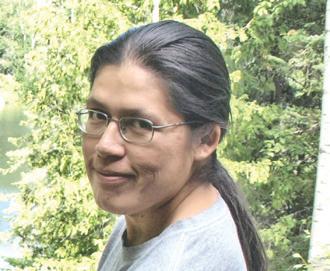

first in Matheson and then later in New Liskeard for decades. Much of that time he was on call, and he rarely got a break as there is always a shortage of doctors in the North. He had no choice but to show up for long hours, often to save the lives of people seriously injured in traffic accidents on the notorious Highway 11.
Over the years, I watched how the stress and challenges of this dedication negatively affected Al. He had a massive heart attack years ago that almost killed him, and he retired soon after. He still made himself available to family and friends to share his knowledge and consideration, however. His wife Diane, another close friend from Iroquois Falls and who had worked for many decades in nursing, was always at his side and that made things easier.
This week we learned of Al’s passing and that news was devastating. At age 76, his poor health took him from us. I am thinking today of how difficult this time is for Mike as he and Al were like brothers over the years. Al is survived by his wife, his sisters Margie and Marion, and many nieces and nephews as well as greatgrand-nieces and -nephews.
His legacy is one of a huge dedication to caring for people in northern Ontario.
years even when he was struggling himself with the challenges and stress of working in an underfunded and overwhelmed northern healthcare system. I learned from Al the sacrifices he made by dedicating his life to helping others.
I also learned that as good citizens we need to make sure that governments provide necessary funding so that everyone has access to prompt and quality health care no matter where they live in Canada. We need to provide as much assistance as possible to our doctors and all healthcare professionals so that they are not overwhelmed and stressed out to the point where it affects their quality of life.
I saw Al as I did so many Elders and traditional people I knew from the James Bay coast. He understood the pioneering hardships of previous generations, and he saw firsthand the difficult lives we lead up here in both the Native and non-Native communities. He had a strong kinship to the North and to wanted to make life one step better for everyone around him.
The Dr. Alex Cuttens of this world are far too precious to us. We need to honour them and to take care of them on their dedicated journey of care for all of us.
– Retro Daze Cafe | T: 819-855-1847
– Bake Cree Restaurant | T : 819-855-6344
– Cree Mart Grocery Store | T: 819-855-1765
– Ouwah Store | T: 514-588-3162
Retro Daze Cafe | T: 819-855-1847 – Bake Cree Restaurant | T : 819-855-6344 – Cree Mart Grocery Store | T: 819-855-1765
Ouwah Store | T: 514-588-3162 – Eastmain Grocery Store T: 819-977-0283


– Eastmain Grocery Store T: 819-977-0283 – Whale
Wemindji Community Store T: 819-978-3656
March is Cree Language Month – a time for us to celebrate being Cree and show pride in our language and honour our heritage. It is an opportunity to recognize and praise the great accomplishments of our Nation in strengthening, revitalizing and preserving our language.
Like many other Indigenous Nations across the world, colonization threatened our way of life and put our language and cultural practices at risk. At a time when our people needed unity the most, the establishment of the Grand Council of the Crees and the signing of the James Bay and Northern Quebec Agreement (JBNQA) brought us together like never before. It restored our self-determination.
Through the JBNQA, we reclaimed our right to teach our own children using a curriculum created by us. The formation of the Cree School Board meant students could learn in Cree, using tools crafted by our own Cree teachers, knowledge keepers and Cree Language Specialists.
In nearly 50 years of the JBNQA, we have built strong cultural programs such as the Cree Language Commission, the Aanischaaukamikw Cree Cultural Institute and the James Bay Cree Communications Society. It is estimated that an Indigenous language is lost every two weeks in the world, therefore we must remain united, foster our culture and maintain our strong Cree Language–not just for ourselves but for generations to come.
Keep up the great work, and Happy Cree Language Month! May we have another 50 years of success and beyond.
in Whapmagoostui in Chisasibi in Wemindji in Eastmain in Nemaska in Waskaganish in Waswanipi in Oujé-Bougoumou in Mistissini copy of your Nation every two weeks?
in Whapmagoostui in Chisasibi in Wemindji in Eastmain in Nemaska in Waskaganish in Waswanipi in Oujé-Bougoumou
Casey’s Depanneur and Gaz T: 418-745-3211 – Smokey Hill Grocery T: 819-895-2727
– Waswanipi Grocery T: 819-753-2514
– Waswanipi Grocery T: 819-753-2514


418-745-3211 – Smokey Hill Grocery T: 819-895-2727 – Wemindji Community T: 819-978-3656 Always available for download at:




